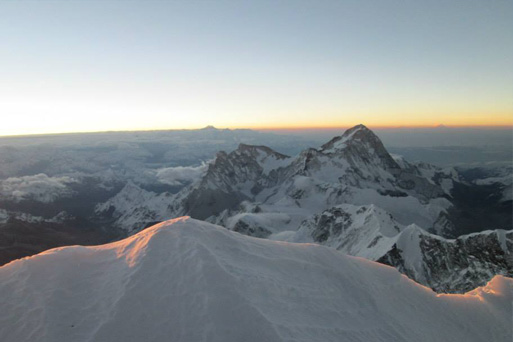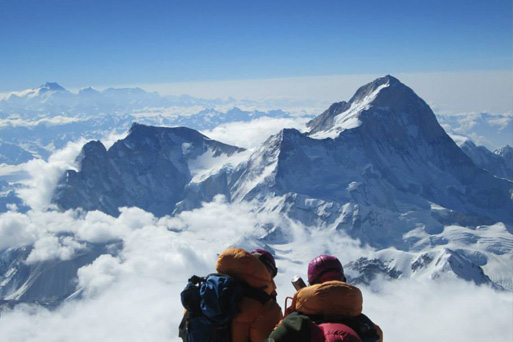60th anniversary of the first summit
On Everest, it took many failures to make that first successful summit happen. George Mallory led multiple pioneering expeditions to the mountain, mapping out its terrain and forging new routes by trial and error. But Mallory’s obsession with scaling Everest would end in tragedy: on 8 June 1924, he set off from Camp 4 to the summit and was never seen alive again. Whether or not he ever conquered Everest is still a mystery.

After Mallory's tragic final expedition, there was a spate of attempts over the next two decades. None of these successfully reached the summit, but were instrumental in shaping some of the climbers who would contribute to the first conquest of the mountain. One of these climbers, a young Nepali Sherpa named Tenzing Norgay had distinguished himself in his mountaineering prowess on several attempts, going so far as to illegally enter Tibet to scale Everest from the North.
In 1952, Tenzing Norgay and Swiss mountaineer Raymond Lambert climbed higher on Everest than anyone had ever done before, reaching an altitude of 8595m metres. But beset by problems with equipment and oxygen, they had to abandon their attempt.
The 1953 Expedition
In 1953, the British sent another expedition, commanded by British Army Colonel and mountaineer John Hunt. It was believed his military leadership skills would increase the chances of success of this attempt. Indeed, a military-style assault on the peak was staged, a veritable siege with massive logistical support from 35 sherpas.

Teamwork was supremely important to Colonel Hunt’s plan to conquer Everest. He used each climbing team as a chess grandmaster might deploy pieces on a board, deploying them based on their strengths and weaknesses to establish a series of ever-higher footholds on the mountain. It was a tough climb as they struggled to reach the higher altitudes of Everest, but eventually, two climbers, Wilfrid Noyce and Sherpa Annullu managed to establish a staging area on the South Col, 850 vertical metres from the summit, boosting the flagging morale of the tired expedition.
Multiple teams set off to try and conquer the summit from the South Col, including Colonel Hunt himself. None of them were successful. The final team selected to make an attempt was a climbing pair that had proven to be strong together: a young Kiwi beekeeper named Edmund Hillary, and Tenzing Norgay, the expedition’s head Sherpa.
Setting out for the Everest in the early morning
Edmund and Tenzing set out in the early morning of the 29th of May, 1953, after a cold and sleepless night at 8500m, just short of Tenzing’s previous record-breaking Everest climb. Not suffering from the equipment problems that had plagued the Sherpa the year before, they continued their ascent to the highest points of the mountain and and scaled the 40-foot vertical face that would soon be immortalised as the Hillary Step.
With, as Hillary put it, "a few more whacks of the axe of the ice in the firm snow", they stood on top of the world. Mount Everest had been conquered, though perhaps Tenzing did not necessarily see it as a conquest. Later he would write warmly of the experience: "My mountain did not seem to be a lifeless thing of rock and ice, but warm and friendly and living. She was a mother hen and the other mountains were chicks under her wings."

Nearly 60 years to the date after that first triumph on Mount Everest, the Horacios successfully reached the summit of Everest. Through years of hard work, Horacio earned himself a place in the rich history of the world's tallest mountain, and by doing it without oxygen, his place among the elite mountaineers of his time.
